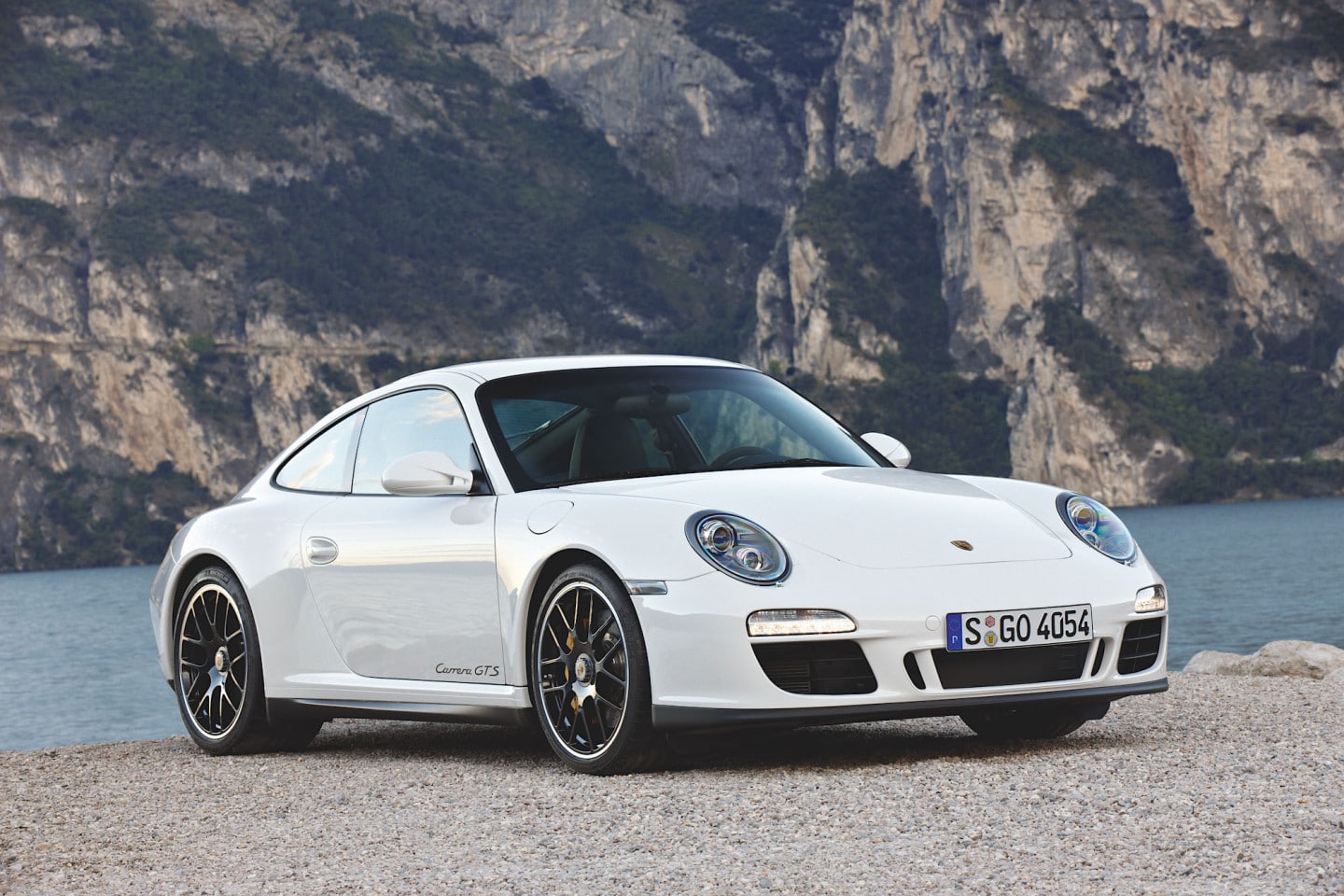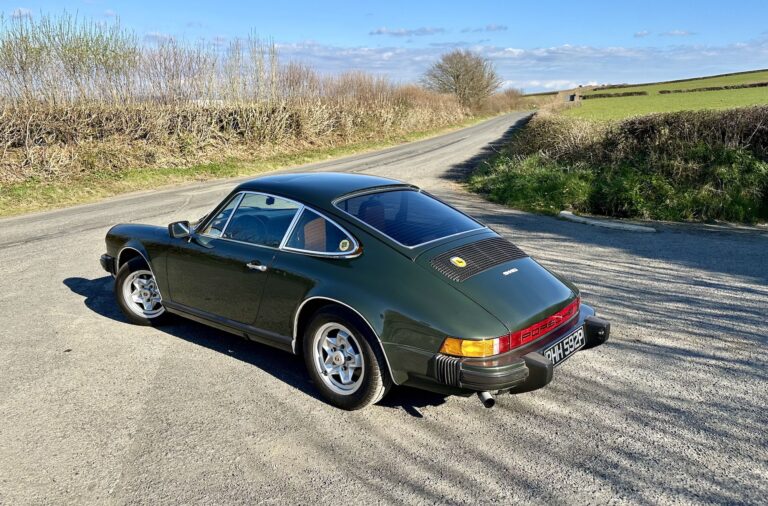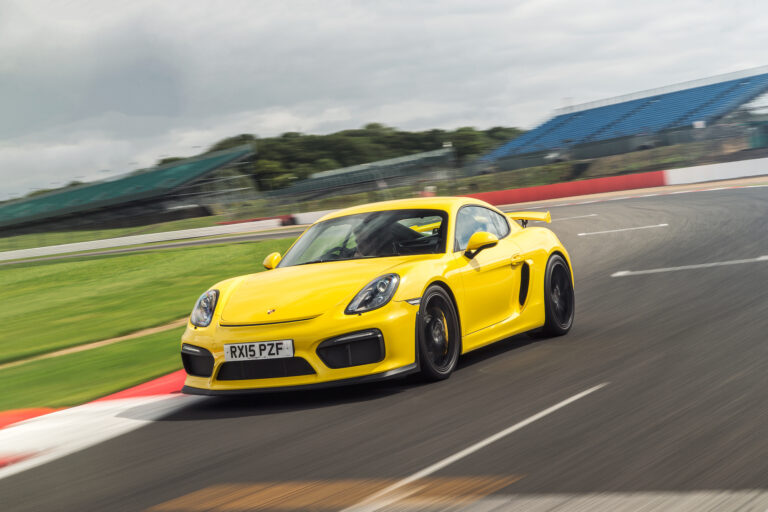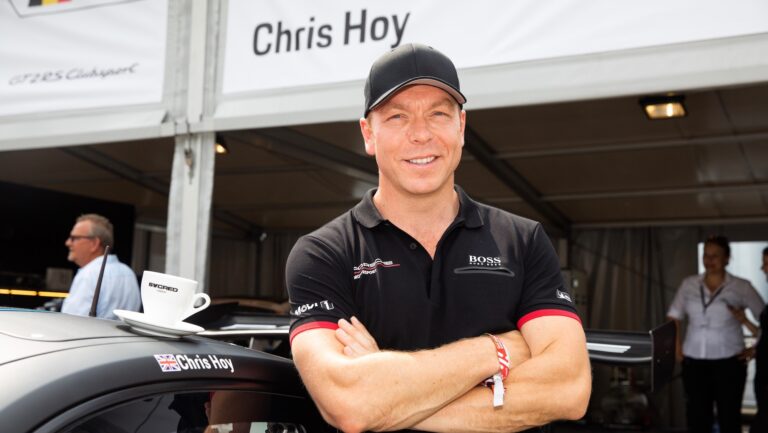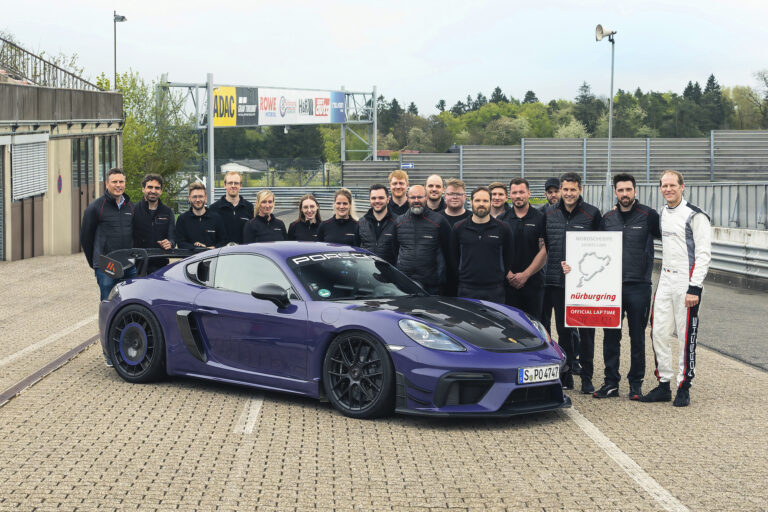 By Tim Pitt
1 year ago
By Tim Pitt
1 year ago
Porsche 997 Carrera GTS buyer’s guide
The complete 9WERKS guide to buying a Porsche 997 Carrera GTS, with expert advice from Jonathan Franklin Cars and Harbour Cars
Why should you buy one?
The expression ‘sweet spot’ is often used in relation to the original 911 Carrera GTS. It cherry-picked many of the best bits from the 997 range, combining heightened performance with comfort and everyday usability. It’s long been the darling of the Porsche Marketplace, and has never really dropped below original list price – an incredible feat for a 911 with ‘Carrera’ stamped to its rump.
Porsche 997 Carrera GTS: the key facts
By 2010, the sun was setting on the 997-generation 911, with the 991 Carrera only a year away. This wasn’t to be a gentle coast towards retirement, though. Within those 12 months, Porsche unwrapped a dazzling array of 997 derivatives, including the Speedster, Sport Classic, 918 Edition, GT2 RS and GT3 RS 4.0. Even so, it was the more accessible new Carrera GTS that arguably made the greatest impact.
Porsche first used the Gran Turismo Sport badge on the 904 Carrera GTS racer in 1963, but it wasn’t affixed to the back of a 911 until 2010. The 997 Carrera GTS was essentially a run-out special, a time-honoured car industry ploy to maintain interest in an ageing model. However, rapturous reviews and sales success meant the GTS would soon transcend special edition status to become a mainstay of the 911 range. Today, every vehicle Porsche makes, from the 718 Boxster to the Taycan, has a middle-ranking GTS version.
Described by Porsche expert Jonathan Franklin as, “The thinking person’s choice of 911”, the original Carrera GTS is a kind of greatest hits album for the 997. Visually, it boasts the 44mm wider hips of the Turbo, the front splitter and black sills from the GT2 RS, and centre-lock RS Spyder alloys inspired by the GT3. Its 3.8-litre naturally aspirated engine is shared with the Speedster and Sport Classic, using a Powerkit to boost output to 408hp at a heady 7,300rpm. Inside, buyers got a Sport Design steering wheel and lashings of Alcantara, with rear seats listed as a no-cost option.
Like its 345hp Carrera and 385hp Carrera S siblings, the GTS was offered in Coupe and Cabriolet body styles, with two or four driven wheels, and with a six-speed manual or seven-speed PDK gearbox. PASM suspension and a sports exhaust came as standard, with notable options including PCCB carbon-ceramic brakes and a limited-slip differential.
Categories
How does the Porsche 997 Carrera GTS drive?
To many enthusiasts, the 997 seemed like the end of an era. It was the last 911 with hydraulic power steering, while its shorter wheelbase and modest footprint (similar to a current 718 Cayman) make it feel right-sized for British roads. The 997’s six-speed manual gearbox is nicer than the notchy seven-speeder introduced on the 991, too.
The Powerkit provides a useful 23hp gain over the Carrera S: good for 0-62mph in 4.6 seconds – or just 4.2 seconds if you find a car with PDK and the Sport Chrono package. Torque is unchanged at 420Nm, but it arrives 200rpm sooner and has a flatter curve. The result is a 911 that feels responsive low down and searing at the top end, with an evocative soundtrack from its sports exhaust.
The GTS is wonderfully tactile in the corners, too. Its 32mm wider track enhances stability without eroding the deft, throttle-adjustable balance of the narrow-bodied Carrera S, while its steering is alert and intuitively precise. The standard PASM dampers react to the road surface, instilling a sense of calm composure that you won’t experience in more focused models such as the GT3. No 911 of this era rewards so richly while demanding so few compromises of its driver.
Jonathan Franklin says many potential GTS buyers also consider a 997 Turbo, as the two are now similarly priced. “They’re both fantastic cars,” he says. “The Turbo is more aggressive and ultimately more exciting, but the GTS is easier to live with. And it can still make you feel like a racing driver when the traffic clears.”
Rob Langley of Harbour Cars has also seen customers weigh up a 997 GTS against a newer 991 Carrera. “The difference between the two cars is equal to the jump from 993 to 996,” he reckons. “The 991 is more modern, but many find the 997 more engaging. In truth, the GTS only offers incremental gains over a contemporary Carrera S, but it’s still the best all-rounder in the 997 range.”
What standard spec does the Porsche 997 Carrera GTS come with?
The C2 GTS rolled into showrooms in November 2010 and, due to its short life, the only notable evolution thereafter was the arrival of the C4 GTS six months later. Despite the latter being 60kg heavier, quoted 0-62mph times are the same. Unlike the regular Carrera models, both two- and four-wheel-drive versions of the GTS use the wider 911 body.
Other cosmetic differences for the GTS include black smoked headlights, a black finish for the exhaust tailpipes, a 10mm lower ride height on PASM suspension and a smattering of extra badges.
A rather half-hearted attempt at lightweighting saw Porsche omit the leather dashboard trim and rear seats to claim a 5kg saving for the GTS coupe versus the equivalent Carrera S. However, after many owners optioned these back in, the cars’ weights are near-as-dammit identical.
The GTS’s water-cooled flat-six comes with an alloy block, dry sump and Variocam Plus. Its standard Powerkit adds six vacuum-controlled flaps to the variable resonance intake system, alongside reshaped inlet ports and the sports exhaust. The result is 107hp per litre – heady stuff for an engine without forced induction, particularly in 2010.
What to look for when buying a Porsche 997 Carrera GTS
The Carrera GTS arrived long after the 997 switched to direct fuel injection (DFI) engines in 2008, meaning the much-publicised bore scoring and intermediate shaft (IMS) issues of the previous M97 motor are not a concern here.
Harbour Cars’ Rob Langley advises checking the centre-lock wheels, as they will be expensive to replace and there are few aftermarket alternatives available. “Look at the centre-lock nuts closely. These can be damaged by powerful wheel cleaners and a set of four will cost you about £1,000.” Indeed, Rob says the optional five-stud wheels may be more practical if you aim to drive long distances. “Changing a centre-lock wheel yourself isn’t really an option – you need specialist tools.”
If your 997 will be more of a weekend car, Jonathan Franklin says flat batteries are a common problem. “I’d definitely invest in a trickle charger. It’s easy to get caught out, because the battery is behind the front luggage compartment, which opens electrically using the key. If the battery dies, the only way to open the car’s bonnet is via the fuse box.”
Another issue highlighted by Rob is the sports exhaust failing to switch between different modes. “The arm after the actuator can seize up, then you end up needing an entire new section of pipework – potentially one on each side. Checking this properly is a two-person job, with somebody underneath the car. Just driving along, pressing the button and listening for a change of tone won’t always tell the whole story, as only one half of the system might be functioning correctly.”
You should check the condition of the radiators on any 997, which can be damaged by stones, or become blocked by dirt and leaves, plus find out when the clutch, air conditioning condensers and brake discs/pads were last replaced. As ever, our advice is to buy from a reputable Porsche specialist, such as those featured in the 9WERKS Marketplace. Paying a bit more upfront will likely save you money in the long run.
Speaking of which, the 997 Carrera GTS is well known as a car that never really depreciated. Porsche asked £76,758 for a manual C2 Coupe in 2010 (around £2,000 more than for a Carrera S) and, as we mentioned, a good example could be worth the same today. The majority are priced between £55,000 and £75,000, and you can expect to pay at least £5,000 more for a manual gearbox. The Coupe commands a small premium over the Cabriolet, too.
Porsche 997 Carrera GTS: the options worth having
Manual gearbox
Introduced on the Gen2 997, the twin-clutch PDK transmission became an instant hit. But the six-speed manual remains the purist’s choice.
Sport Chrono
Combining the Sport Chrono package with a PDK ’box means you get launch control – slashing the car’s 0-62mph time to just 4.2 seconds.
PCCB brakes
Carbon-ceramic discs were an expensive option when new (£5,349). They reduce unsprung weight and deliver fade-free stopping power.
PASM Sport suspension
PASM adaptive dampers were standard on the GTS, but the Sport setup offered sharper responses and a 10mm lower ride height (20mm lower than a stock 997 Carrera).
Limited-slip differential
The mechanical limited-slip diff improves traction out of corners, so it could be particularly beneficial on the two-wheel-drive C2.
Rear seats
A no-cost option, rear seats greatly enhance the 911’s practicality. They also prevent luggage from rolling around if the front boot is already full.
Leather dashboard
Porsche omitted leather dashboard trim to save weight, but it gives the interior a more upmarket feel. We prefer Alcantara for the seats, though.
Special colours
Two special paint colours, GT Silver and Amethyst, were available on the GTS. You’ll also see plenty of cars in white, which was fashionable at the time.
Porsche 997 Carrera GTS: technical spec
Years produced: 2010-2012
Cars made: Unknown
Engine: Flat-six, 3,800cc, naturally aspirated
Power: 408hp @ 7,300rpm
Torque: 420Nm @ 4,200-5,600rpm
Compression ratio: 12.5:1
Transmission: 6-speed manual or 7-speed PDK
Suspension
Front: MacPherson struts, coil springs, anti-roll bar
Rear: Multi-link, coil springs, anti-roll bar
Wheels and tyres
Front: 8.5×19-inch; 235/35/ZR19
Rear: 11×19-inch; 305/30/ZR19
Length: 4,435mm
Width: 1,852mm
Weight: 1,420kg (C2), 1,480kg (C4)
0-62mph: 4.6 sec (manual), 4.4 sec (PDK), 4.2 sec (PDK + Sport Chrono)
Top speed: 190mph (C2), 188mph (C4)
Take a look at our range of quality Porsche for sale in the 9WERKS Marketplace – all are sold with comprehensive warranties for peace of mind, only from reputable dealers
